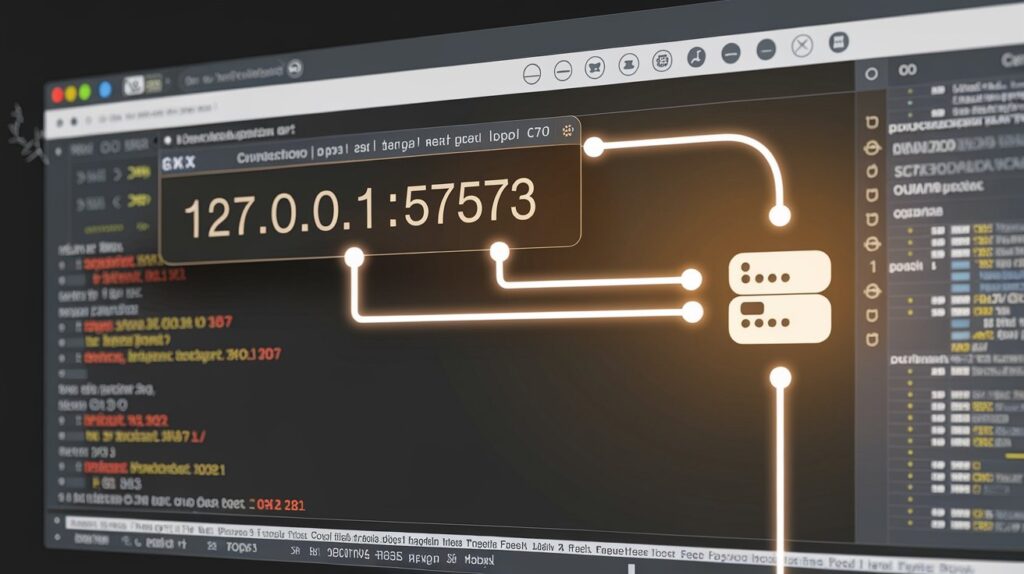
127.0.0.1:57573 often plays a vital role in local network communication or development environments. This combination of an IP address and port number has specific uses, especially for developers, network administrators, and gamers. We must break down the components and their functionalities to understand their significance.
What is 127.0.0.1?
The IP address 127.0.0.1 is commonly known as “localhost” or the “loopback address.” This address is a reserved IP that refers to your machine or system. It’s a shortcut that tells the computer to send data directly to itself rather than reaching out to external networks or devices. The 127.0.0.1 address is essential for testing, local network operations, and running applications in an isolated environment.
Instead of sending information to the Internet, 127.0.0.1 ensures all data remains within your local machine. This makes it ideal for running and debugging software or hosting local servers. Think of it as a closed-loop system that communicates with itself to simulate network activity.

What Does Port 57573 Represent?
The second part of the combination, 57573, refers to the port number. A port number is an identifier for specific applications or services on your machine. Different port numbers direct different types of traffic, helping manage the flow of information in and out of a system. In this case, 57573 is a unique port number used by a specific application or service.
The combination 127.0.0.1:57573 tells your computer that you’re addressing a particular service (identified by port 57573) running on your local machine (127.0.0.1).
Also Read: 127.0.0.1:62893
Common Uses for 127.0.0.1:57573
The combination 127.0.0.1:57573 serves different purposes based on the specific software environment or application. Below are some of the most common use cases:
- Local Web Development
Web developers frequently use 127.0.0.1:57573 or similar combinations when creating and testing websites or applications locally. Instead of uploading code to a live server, developers can simulate the web environment on their machine. This allows them to preview changes and ensure everything works perfectly before making it available to users. The 127.0.0.1 address restricts the application to the developer’s system, while 57573 directs it to the specific web development application.
For instance, a developer may start a local server using a framework like Node.js or Django during web development. This server will run on a specific port (such as 57573) and respond only to requests sent to 127.0.0.1, meaning it won’t be accessible from the Internet.
- Remote Access and Troubleshooting
In some cases, 127.0.0.1:57573 can be utilized in remote access configurations. When troubleshooting or managing software, remote desktop services, and remote debugging tools might use this address to help network administrators or users access their machines from another device on the same local network. This makes it useful for system maintenance or specific development-related tasks without exposing the computer to the broader Internet.
- Local Network Gaming
Online games often rely on local network communication to facilitate multiplayer matches, especially when players are on the same network. Using 127.0.0.1:57573, the game creates a server or session that can handle local communication between the players, minimizing latency and ensuring a smoother gaming experience. This can be especially handy for games allowing local or LAN multiplayer without an internet connection.

How to Find Out What’s Using 127.0.0.1:57573
If you’re unsure which application or service is using 127.0.0.1:57573, there are a few ways to investigate:
- Check Firewall Settings
Your firewall might block traffic on port 57573 if it deems it suspicious. Check your firewall’s inbound and outbound rules to ensure that the necessary application or service is functioning correctly. You might find that allowing traffic on 127.0.0.1:57573 resolves any connectivity issues you’re experiencing locally.
- Use Netstat to Monitor Network Connections
If you’re on a Windows or Linux system, you can use the netstat command to see active network connections and determine which service occupies port 57573. To do this, open the command prompt (or terminal) and type netstat -a -n -o. This will provide a list of all active ports and the corresponding applications, allowing you to identify which service uses 127.0.0.1:57573.
- Use Resource Monitoring Tools
Most modern operating systems come with built-in resource monitors. These tools can help you track which applications are using specific ports. For example, you can access the Resource Monitor via Task Manager on Windows and navigate to the “Network” tab to see what’s occupying port 57573.

Conclusion
127.0.0.1:57573 is more than just a random combination of numbers; it’s an essential part of local network communication. Whether you’re working on web development, managing remote access, or gaming on a local network, this address-port combo serves specific, valuable functions. Knowing how to work with 127.0.0.1:57573 can help you troubleshoot issues, manage applications, and maintain secure, efficient communication on your machine.
Understanding the importance of the 127.0.0.1 loopback address and how port numbers like 57573 function can significantly improve your workflow when developing applications or setting up servers. Using the right tools, you can easily monitor and control which applications utilize specific ports, keeping your system running smoothly and securely.
